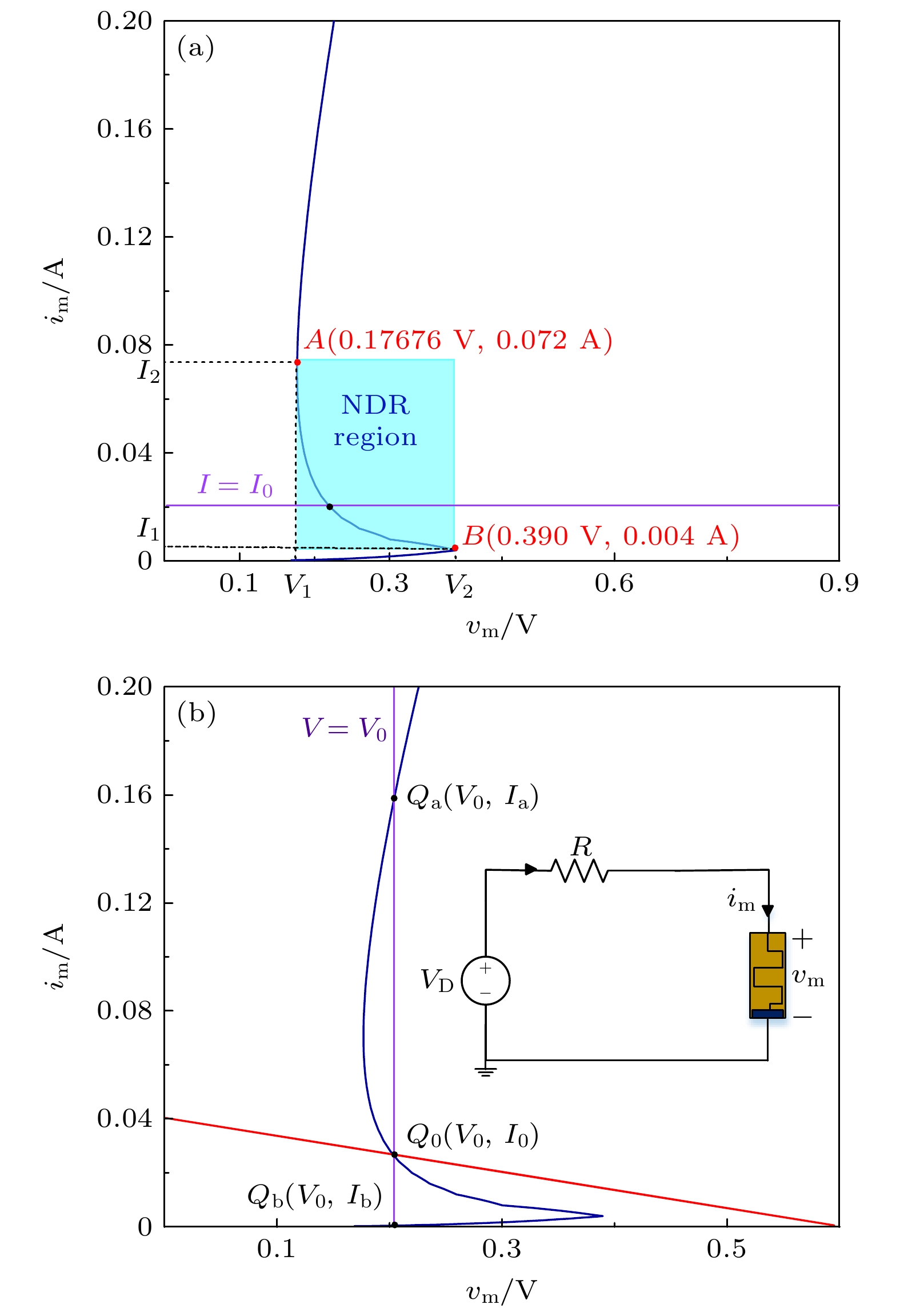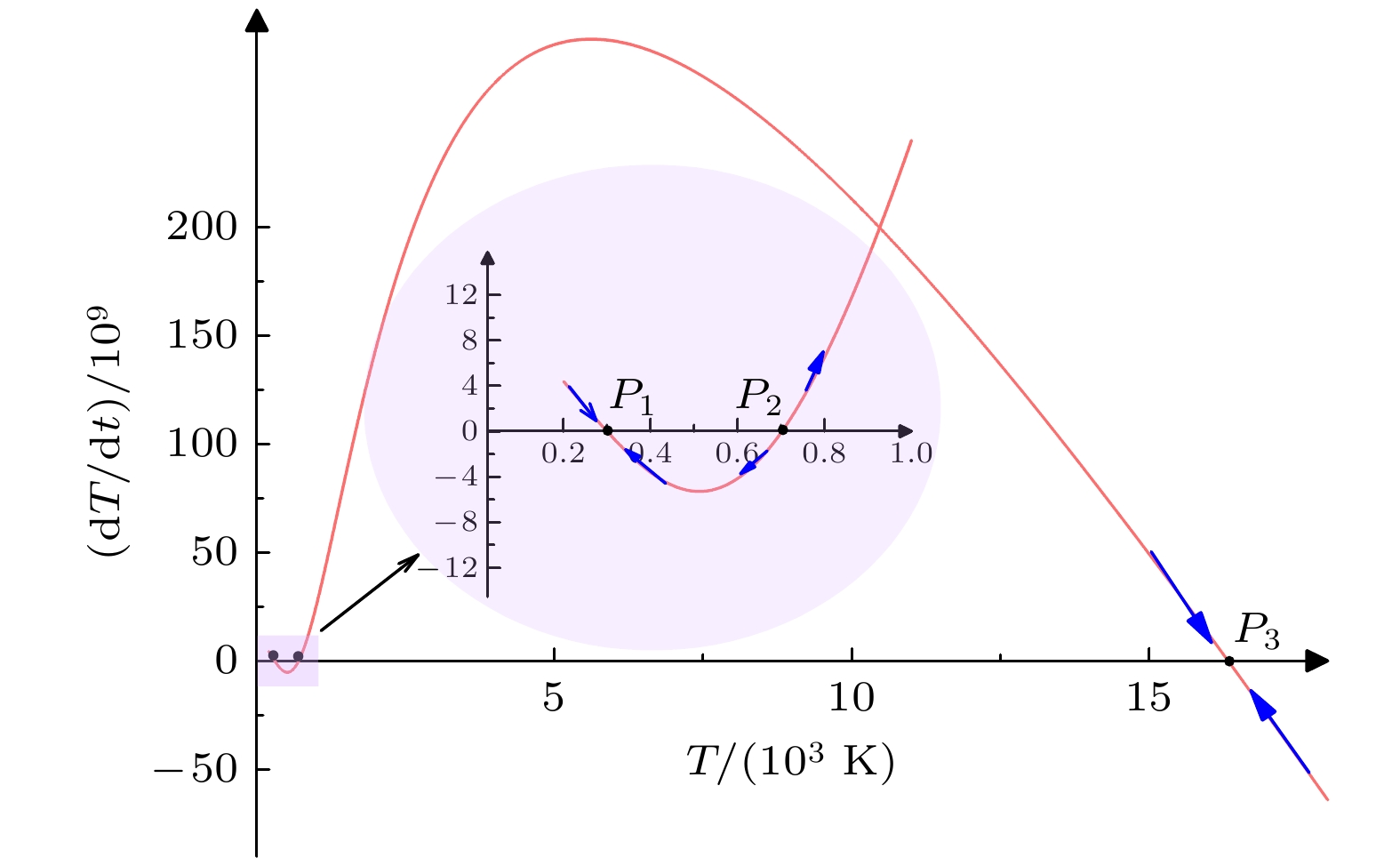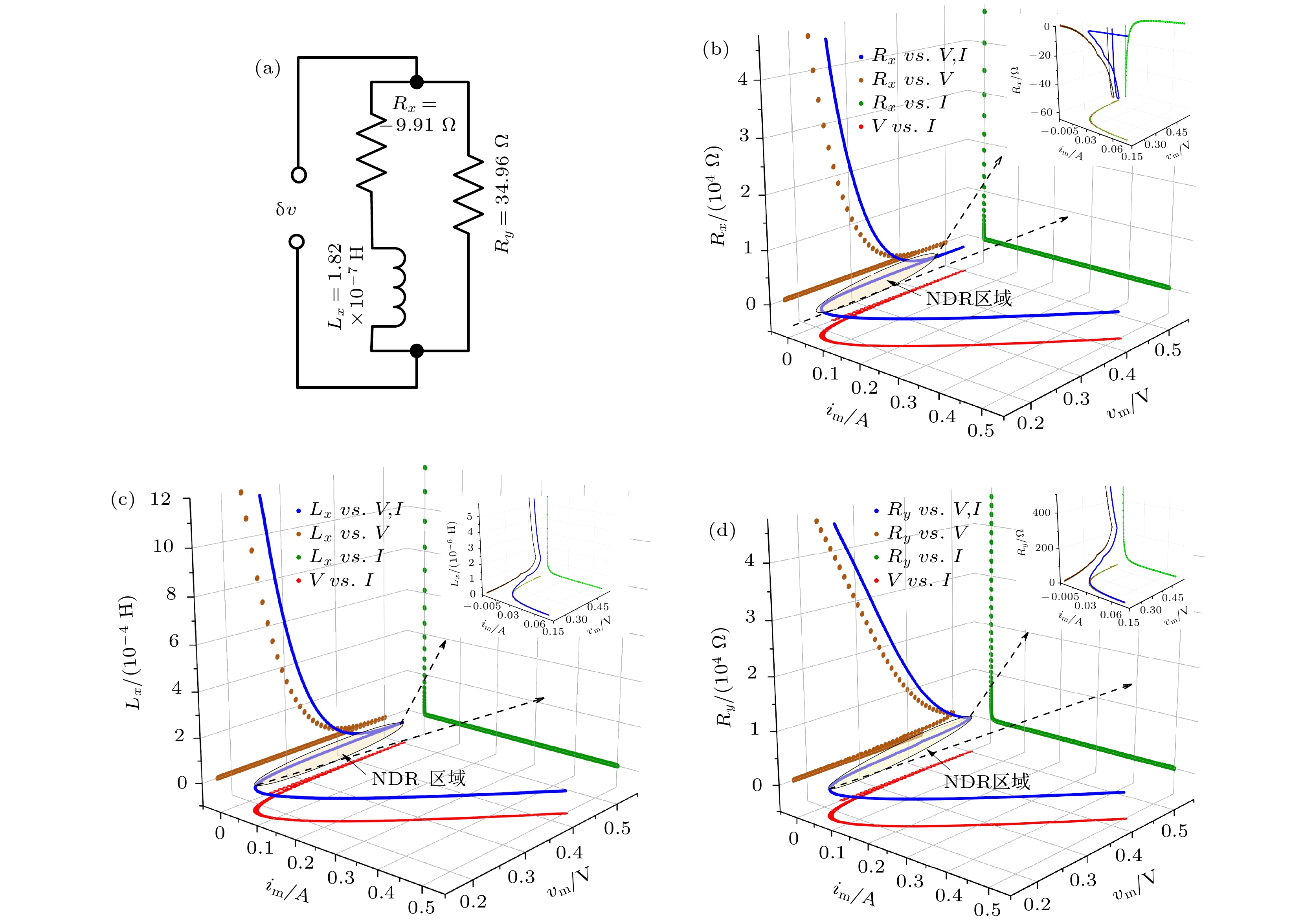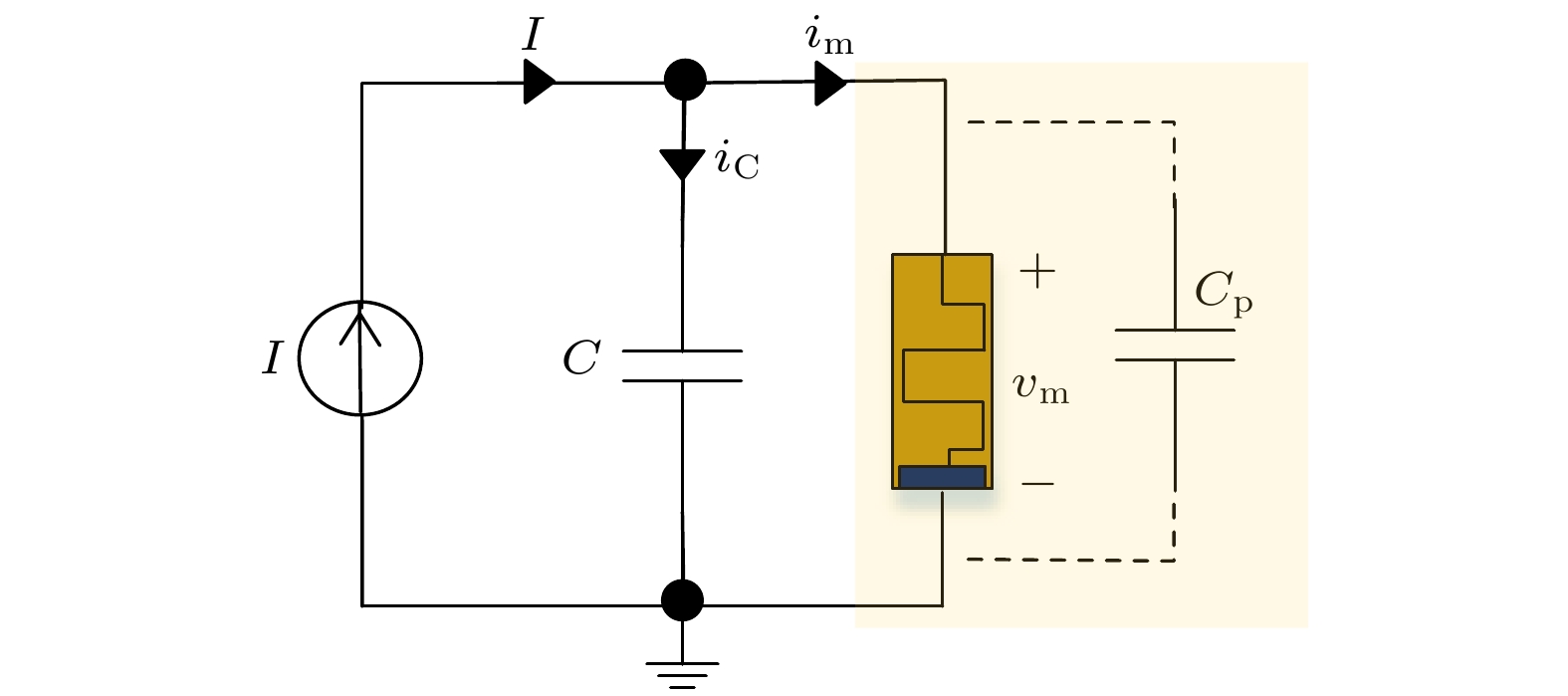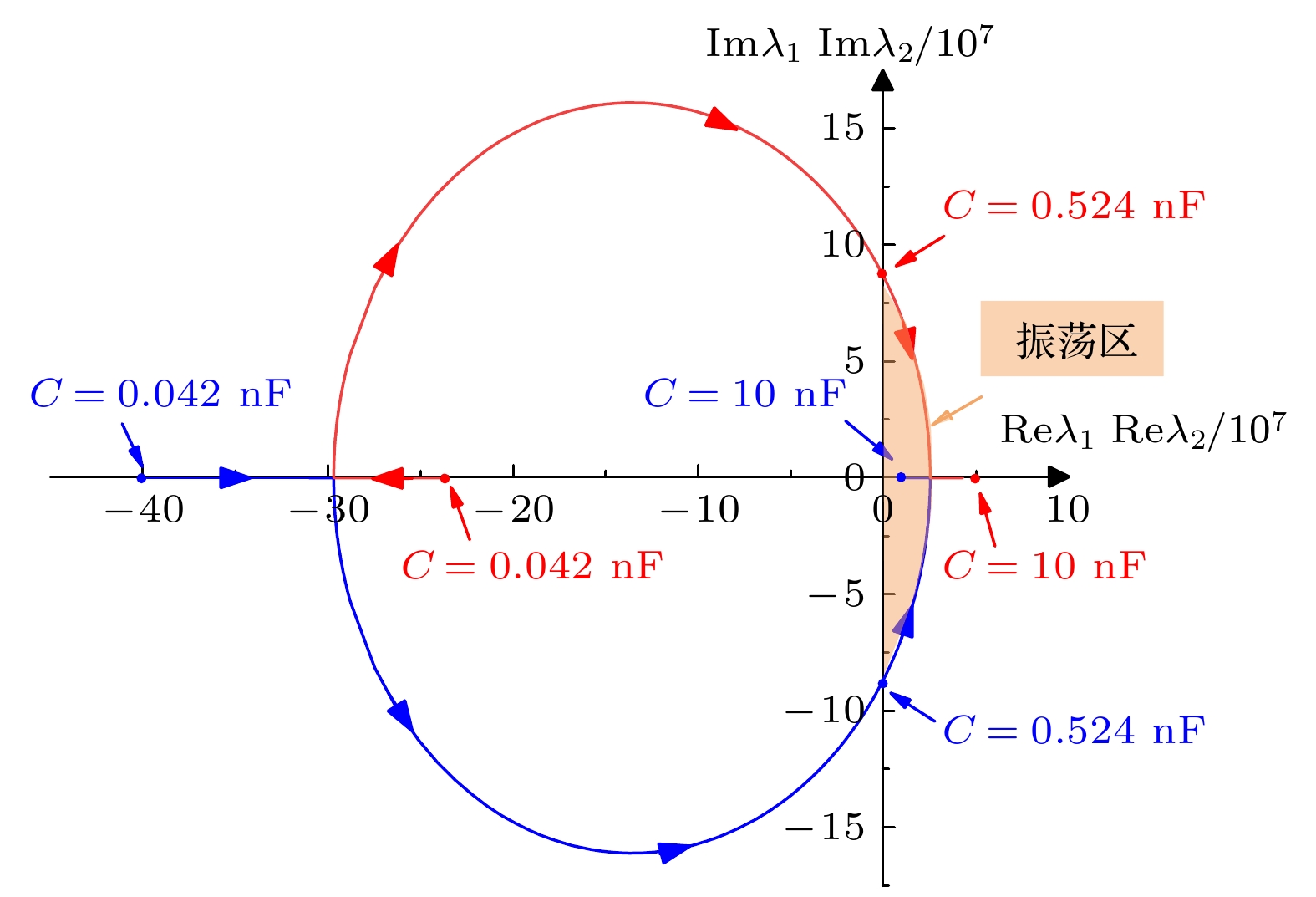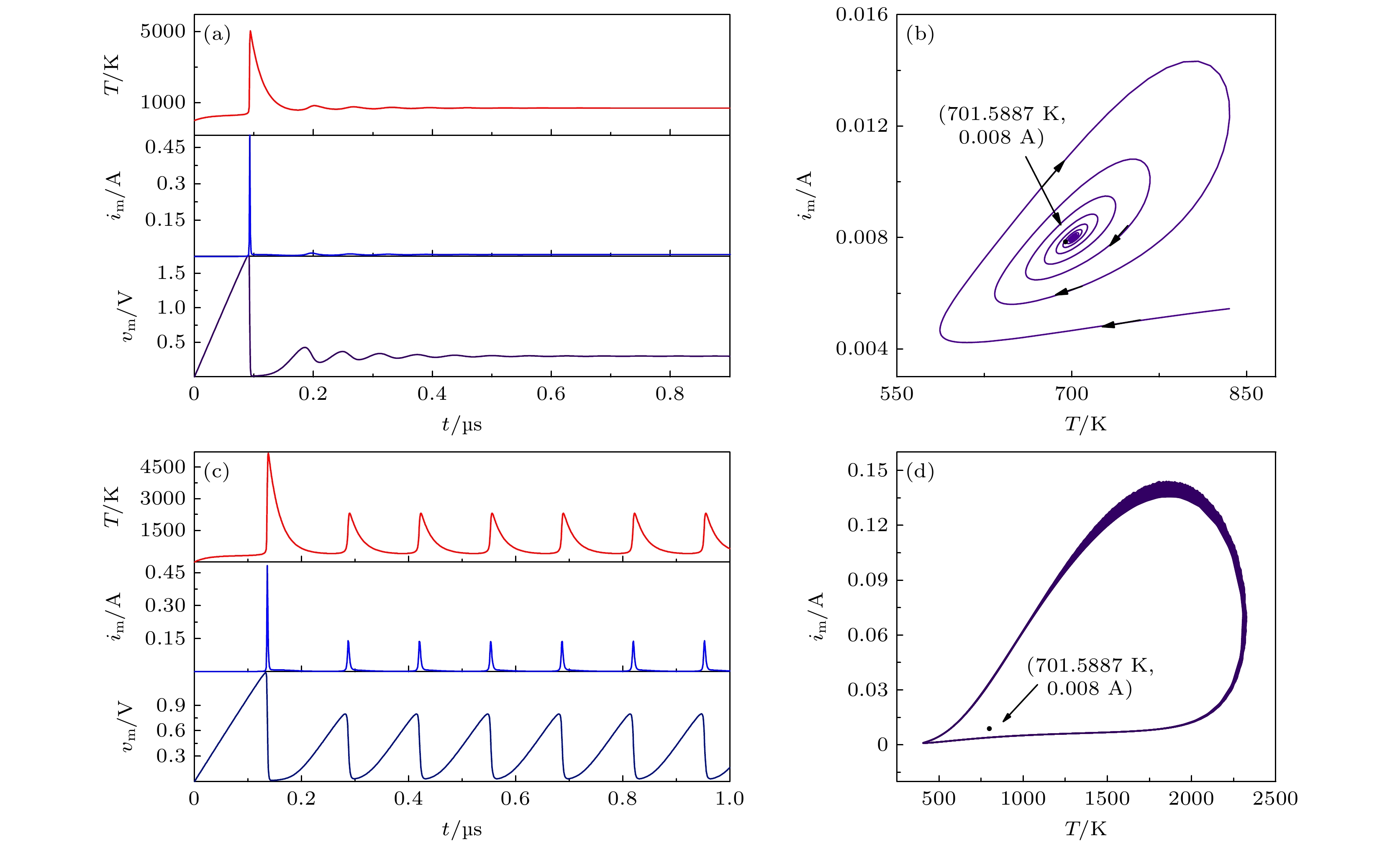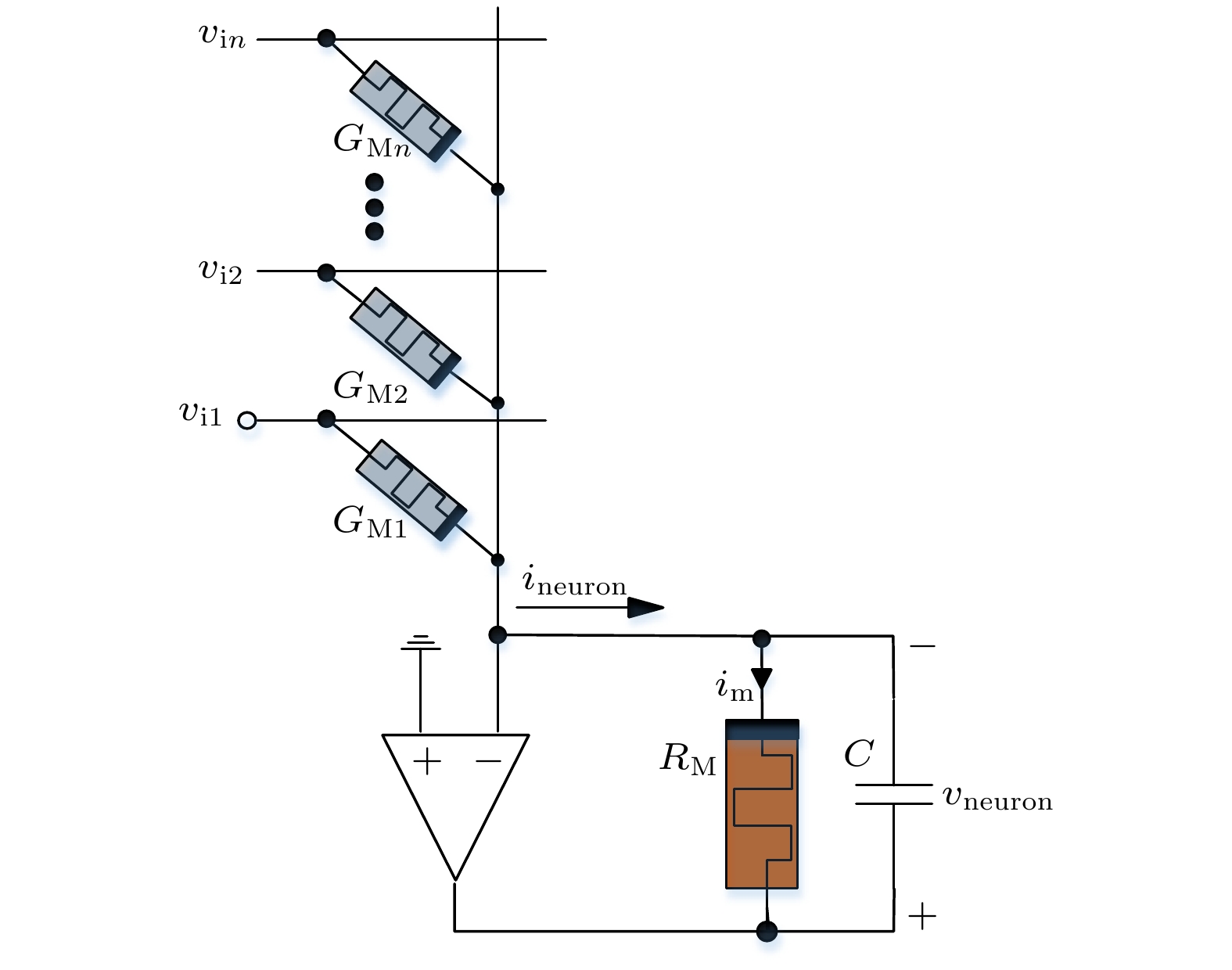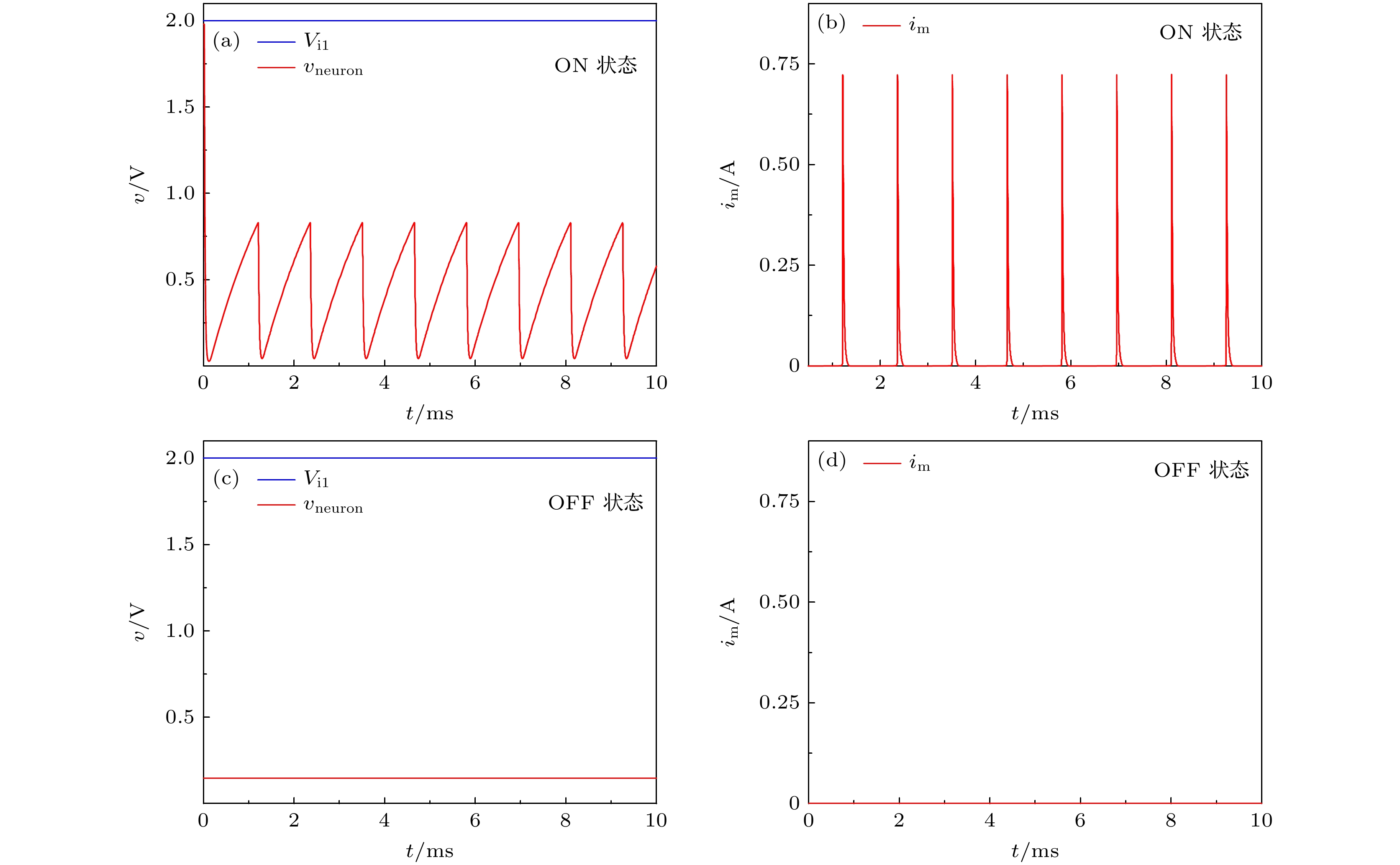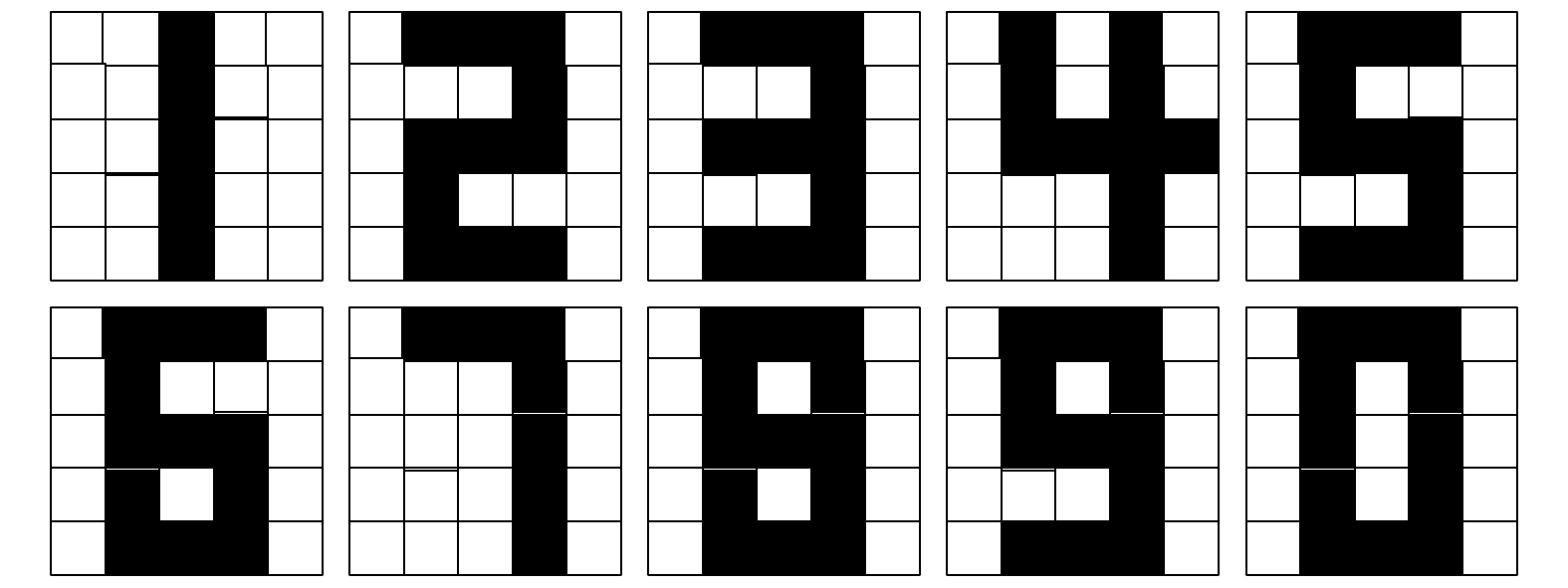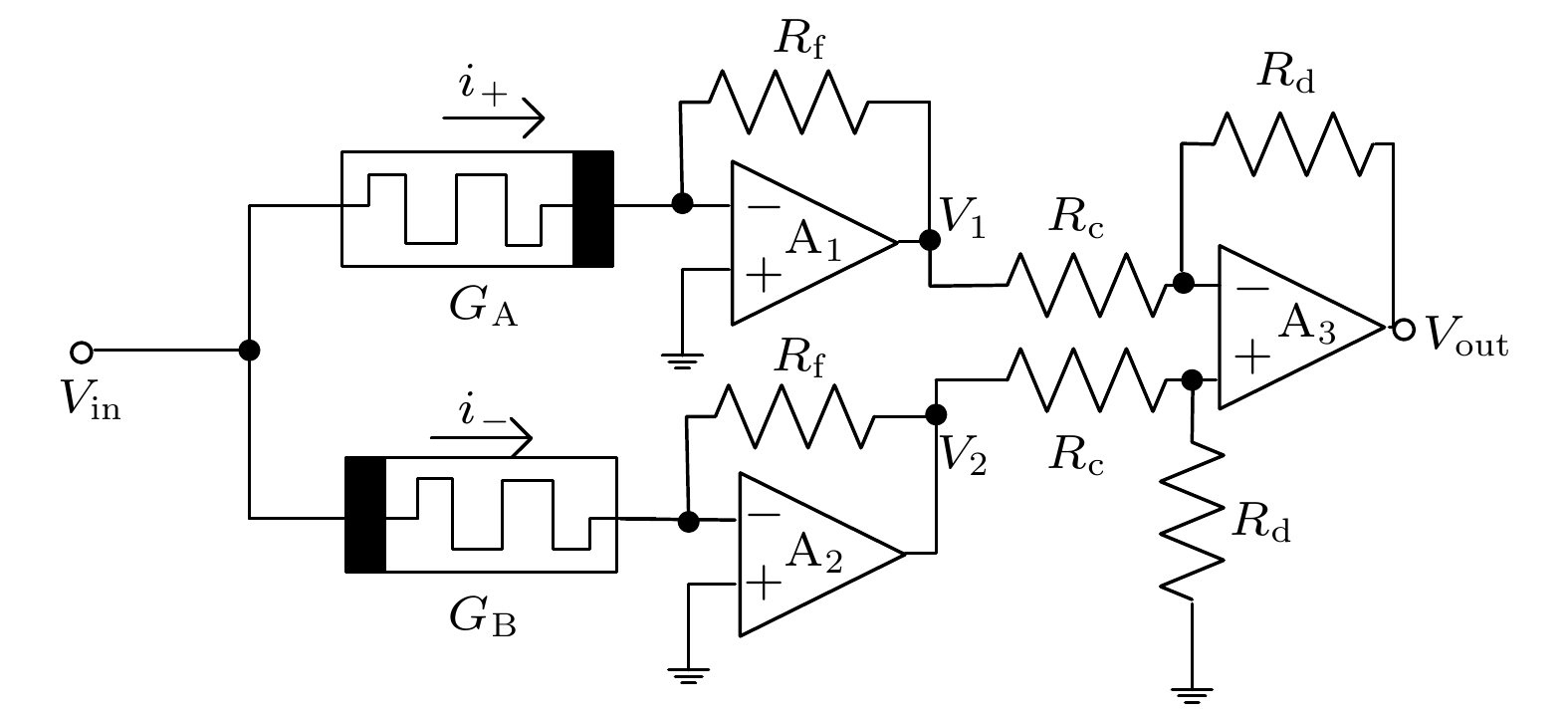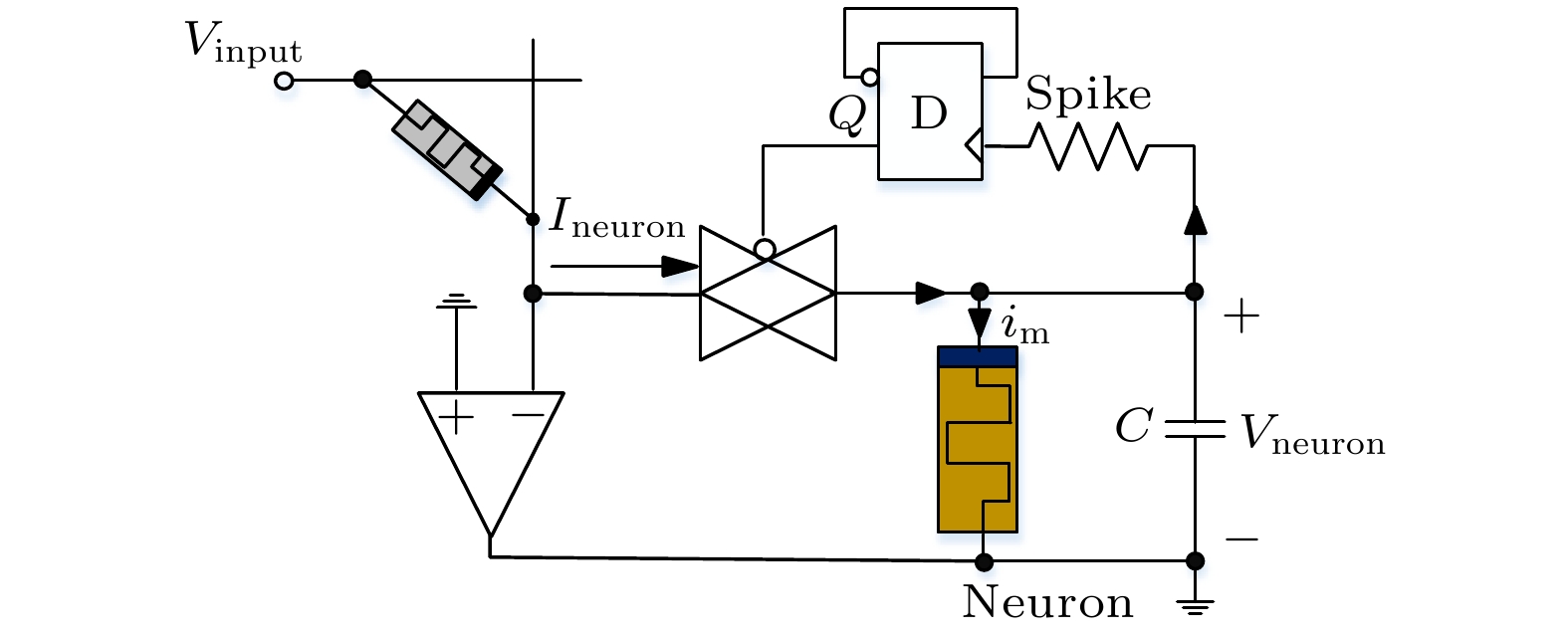-
NbOx memristors show great application prospect in neuromorphic computing due to its nanoscale size, threshold switching, and locally active properties. The in-depth analysis and study of NbOx memristors’s dynamic properties are beneficial to the design and optimization of memristive neuron circuits. In this paper, based on the local active theory, the physical model of NbOx memristor is studied by using the small signal analysis method, and the region and conditions of the peak oscillation are quantitatively analyzed, and the quantitative relationship between the excitation signal amplitude and the peak frequency is determined. Based on the above theoretical analysis, NbOx memristor neurons are further designed and combined with the memristive synaptic crisscross array in order to construct a 25×10 spiking neural network (SNN). Finally, the recognitional function of digital 0 to 9 patterns is effectively realized by using frequency coding and time coding respectively.
-
Keywords:
- NbOx memristor /
- local-activity /
- artificial neuron /
- spiking neural network
[1] Chua L O 1971 IEEE Trans. Circuits Syst. 18 5
[2] Williams R S 2008 IEEE Spectr. 45 12
[3] Zhou J, Cai F, Wang Q, Chen B, S Gaba, W D Lu 2016 IEEE Electron Device Lett. 37 4
 Google Scholar
Google Scholar
[4] 王春华, 蔺海荣, 孙晶如, 周玲, 周超, 邓全利 2020 电子与信息学报 42 795
 Google Scholar
Google Scholar
Wang C H, Lin H R, Sun R J, Zhou L, Zhou C, Deng Q L 2020 J. Electron. Inf. Technol. 42 795
 Google Scholar
Google Scholar
[5] Yang J J, Strukov D B, Stewart D R 2013 Nat. Nanotechnol. 8 1
 Google Scholar
Google Scholar
[6] Wu H, Zhou J, Chen M, Xu Q, Bao B 2021 Chaos, Solitons Fractals. 154 2022
[7] Kim S, Du C, Sheridan P, Ma W, Choi S H, Lu W D 2015 ACS Nano 15 3
[8] Weiher M, Herzig M, Tetzlaff R, Ascoli A, Mikolajick T, Slesazeck S 2019 IEEE Trans. Circuits Syst. 66 7
[9] Strukov D B 2016 Appl. Phys. A 122 4
 Google Scholar
Google Scholar
[10] Kvatinsky S, Ramadan M, Friedman E G, Kolodny A 2015 IEEE Trans. Circuits Syst. Express Briefs. 62 8
[11] Chua L O 2005 Int. J. Bifurcation Chaos 15 11
[12] Ruan J Y, Sun K H, Mou J, He S B, Zhang L M 2018 Eur. Phys. J. Plus 133 3
 Google Scholar
Google Scholar
[13] Weiher M, Herzig M, Tetzlaff R, Ascoli A, Mikolajick T, Slesazeck S 2019 IEEE Trans. Circuits Syst. Regul. Pap. 66 7
[14] Liang Y, Wang G Y, Chen G R, Dong Y J, Yu D S, Iu H H C 2020 IEEE Trans Circuits Syst. 67 5139
 Google Scholar
Google Scholar
[15] Mannan Z I, Choi H, Kim H, Chua L O 2016 Int. J. Bifurcation Chaos 26 1630009
 Google Scholar
Google Scholar
[16] Jin P P, Wang G Y, Liang Y, Iu H H C, Chua L O 2021 IEEE Trans. Circuits Syst. 68 11
[17] Yi W, Tsang K K, Lam S K, Bai X, Crowell J A, Flores E A 2018 Nat. Commun. 7 9
[18] Lin H R, Wang C H, Sun Y C, Yao W 2020 Nonlinear Dyn. 100 4
[19] Wei Q M, Tang J S, Li X Y, Zhong Y N, Gao B, Qian H, Wu H Q 2021 5th IEEE Electron Devices Technology & Manufacturing Conference (EDTM) Chengdu, China, April 8–11, 2021 pp1–3
[20] Frank D J, Dennard R H, Nowak E, Solomon P M, Taur Y, Wong H S P 2001 Proc. IEEE. 89 3
 Google Scholar
Google Scholar
[21] Yeo I, Chu M, Gi S, Hwang H, Lee B 2019 IEEE Trans. Electron Devices 66 7
 Google Scholar
Google Scholar
[22] Zhang X M, Wu Z H, Lu J K, et al. 2020 IEEE International Electron Devices Meeting(IEDM) Electr Network, December 12–18, 2020
[23] Wang Z R, Joshi S, Savel’ ev S, et al. 2018 Nat. Electron. 1 2
 Google Scholar
Google Scholar
[24] Sheridan P, Ma W, Lu W 2014 IEEE International Symposium on Circuits and Systems (ISCAS) Melbourne, June 1–5, 2014 pp1078–1081
[25] Kumar S, Strachan J P, Williams R S 2017 Nature 548 7667
[26] Lottermoser T, Lonkai T, Amann U, Hohlwein D, Ihringer J, Fiebig M 2004 Nature 430 6999
[27] Sawicki M, Chiba D, Korbecka A, Nishitani Y, Majewski J A, Matsukura F, Dietl T, Ohno H 2008 Nature 455 7212
[28] Ascoli1 A, Demirkol1 A S, Tetzlaff R, Slesazeck S, Mikolajick T, Chua L O 2021 Front. Neurosci. 15 651452
 Google Scholar
Google Scholar
[29] Liang Y, Zhu Q, Wang G Y, Nath S K, Iu H H C, Nandi S K, Elliman R G 2021 IEEE Trans. Circuits Syst. Regul. Pap. 68 1278
 Google Scholar
Google Scholar
[30] 徐泠风, 李传东, 陈玲 2016 物理学报 65 240701
 Google Scholar
Google Scholar
Xu L F, Li C D, Chen L 2016 Acta Phys. Sin. 65 240701
 Google Scholar
Google Scholar
[31] Zhang Y, Wang X, Li Y, Friedman E G 2017 IEEE Trans. Circuits Syst. Express Briefs. 64 7
[32] 洪庆辉 2019 博士学位论文 (武汉: 华中科技大学)
Hong Q H 2019 Ph.D. Dissertation (Wuhan: Huazhong University of Science and Technology) (in Chinese)
-
图 4 (a) NbOx-Mott忆阻器在工作点Q (0.008 A, 0.3003 V)处的小信号等效电路模型; (b) Rx对工作点的依赖性; (c) Lx对工作点的依赖性; (d) Ry对工作点的依赖性
Figure 4. (a) Small-signal equivalent circuit model of NbOx-Mott memristor at the operating point Q (0.008 A, 0.3003 V); (b) the dependence of Rx on the operating point; (c) the dependence of Lx on the operating point; (d) the dependence of Ry on the operating point.
图 8 当I = 0.008 A, C = 0.3 nF时, NbOx LAM的二阶振荡器的仿真结果 (a)电压vm、状态变量T和电流im的瞬态波形; (b)稳定点的im-T相图; 当I = 0.008 A, C = 0.8 nF时, NbOx LAM的二阶振荡器的仿真结果: (c)电压vm、状态变量T和电流im的瞬态波形; (d) 振荡状态的im-T相图
Figure 8. Simulation results of the NbOx LAM second-order oscillator: (a) The transient waveforms of vm, T and im at I = 0.008 A and C = 0.3 nF; (b) the stable equilibrium on im-T phase plane at I = 0.008 A and C = 0.3 nF; (c) the transient waveforms of vm, T and im at I = 0.008 A and C = 0.8 nF; (d) the limit cycle on the im-T phase plane at I = 0.008 A and C = 0.8 nF.
图 11 (a) 忆阻突触处于ON状态时, Vi1和vm时域图; (b) 忆阻突触处于ON状态时, im时域图; (c) 忆阻突触处于OFF状态时, Vi1和vm时域图; (d) 忆阻突触处于OFF状态时, im时域图
Figure 11. (a) The time-domain waveforms of Vi1 and vm when the memristive synapse is at ON state; (b) the time-domain waveforms of im at ON state; (c) the time-domain waveforms of Vi1 and vm when the memristive synapse is at OFF state; (d) the time-domain waveforms of im at OFF state.
-
[1] Chua L O 1971 IEEE Trans. Circuits Syst. 18 5
[2] Williams R S 2008 IEEE Spectr. 45 12
[3] Zhou J, Cai F, Wang Q, Chen B, S Gaba, W D Lu 2016 IEEE Electron Device Lett. 37 4
 Google Scholar
Google Scholar
[4] 王春华, 蔺海荣, 孙晶如, 周玲, 周超, 邓全利 2020 电子与信息学报 42 795
 Google Scholar
Google Scholar
Wang C H, Lin H R, Sun R J, Zhou L, Zhou C, Deng Q L 2020 J. Electron. Inf. Technol. 42 795
 Google Scholar
Google Scholar
[5] Yang J J, Strukov D B, Stewart D R 2013 Nat. Nanotechnol. 8 1
 Google Scholar
Google Scholar
[6] Wu H, Zhou J, Chen M, Xu Q, Bao B 2021 Chaos, Solitons Fractals. 154 2022
[7] Kim S, Du C, Sheridan P, Ma W, Choi S H, Lu W D 2015 ACS Nano 15 3
[8] Weiher M, Herzig M, Tetzlaff R, Ascoli A, Mikolajick T, Slesazeck S 2019 IEEE Trans. Circuits Syst. 66 7
[9] Strukov D B 2016 Appl. Phys. A 122 4
 Google Scholar
Google Scholar
[10] Kvatinsky S, Ramadan M, Friedman E G, Kolodny A 2015 IEEE Trans. Circuits Syst. Express Briefs. 62 8
[11] Chua L O 2005 Int. J. Bifurcation Chaos 15 11
[12] Ruan J Y, Sun K H, Mou J, He S B, Zhang L M 2018 Eur. Phys. J. Plus 133 3
 Google Scholar
Google Scholar
[13] Weiher M, Herzig M, Tetzlaff R, Ascoli A, Mikolajick T, Slesazeck S 2019 IEEE Trans. Circuits Syst. Regul. Pap. 66 7
[14] Liang Y, Wang G Y, Chen G R, Dong Y J, Yu D S, Iu H H C 2020 IEEE Trans Circuits Syst. 67 5139
 Google Scholar
Google Scholar
[15] Mannan Z I, Choi H, Kim H, Chua L O 2016 Int. J. Bifurcation Chaos 26 1630009
 Google Scholar
Google Scholar
[16] Jin P P, Wang G Y, Liang Y, Iu H H C, Chua L O 2021 IEEE Trans. Circuits Syst. 68 11
[17] Yi W, Tsang K K, Lam S K, Bai X, Crowell J A, Flores E A 2018 Nat. Commun. 7 9
[18] Lin H R, Wang C H, Sun Y C, Yao W 2020 Nonlinear Dyn. 100 4
[19] Wei Q M, Tang J S, Li X Y, Zhong Y N, Gao B, Qian H, Wu H Q 2021 5th IEEE Electron Devices Technology & Manufacturing Conference (EDTM) Chengdu, China, April 8–11, 2021 pp1–3
[20] Frank D J, Dennard R H, Nowak E, Solomon P M, Taur Y, Wong H S P 2001 Proc. IEEE. 89 3
 Google Scholar
Google Scholar
[21] Yeo I, Chu M, Gi S, Hwang H, Lee B 2019 IEEE Trans. Electron Devices 66 7
 Google Scholar
Google Scholar
[22] Zhang X M, Wu Z H, Lu J K, et al. 2020 IEEE International Electron Devices Meeting(IEDM) Electr Network, December 12–18, 2020
[23] Wang Z R, Joshi S, Savel’ ev S, et al. 2018 Nat. Electron. 1 2
 Google Scholar
Google Scholar
[24] Sheridan P, Ma W, Lu W 2014 IEEE International Symposium on Circuits and Systems (ISCAS) Melbourne, June 1–5, 2014 pp1078–1081
[25] Kumar S, Strachan J P, Williams R S 2017 Nature 548 7667
[26] Lottermoser T, Lonkai T, Amann U, Hohlwein D, Ihringer J, Fiebig M 2004 Nature 430 6999
[27] Sawicki M, Chiba D, Korbecka A, Nishitani Y, Majewski J A, Matsukura F, Dietl T, Ohno H 2008 Nature 455 7212
[28] Ascoli1 A, Demirkol1 A S, Tetzlaff R, Slesazeck S, Mikolajick T, Chua L O 2021 Front. Neurosci. 15 651452
 Google Scholar
Google Scholar
[29] Liang Y, Zhu Q, Wang G Y, Nath S K, Iu H H C, Nandi S K, Elliman R G 2021 IEEE Trans. Circuits Syst. Regul. Pap. 68 1278
 Google Scholar
Google Scholar
[30] 徐泠风, 李传东, 陈玲 2016 物理学报 65 240701
 Google Scholar
Google Scholar
Xu L F, Li C D, Chen L 2016 Acta Phys. Sin. 65 240701
 Google Scholar
Google Scholar
[31] Zhang Y, Wang X, Li Y, Friedman E G 2017 IEEE Trans. Circuits Syst. Express Briefs. 64 7
[32] 洪庆辉 2019 博士学位论文 (武汉: 华中科技大学)
Hong Q H 2019 Ph.D. Dissertation (Wuhan: Huazhong University of Science and Technology) (in Chinese)
Catalog
Metrics
- Abstract views: 10572
- PDF Downloads: 324
- Cited By: 0














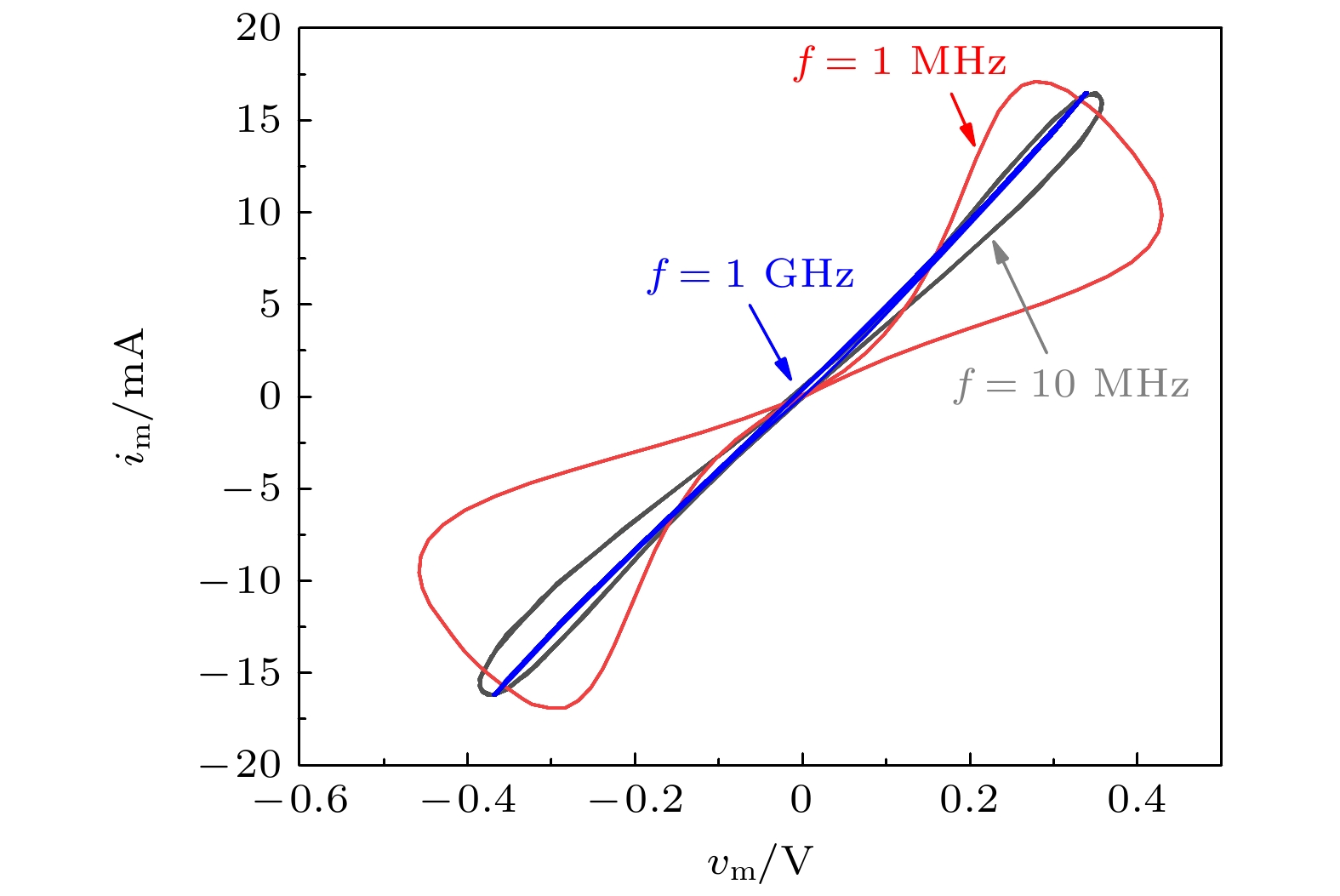
 DownLoad:
DownLoad:
